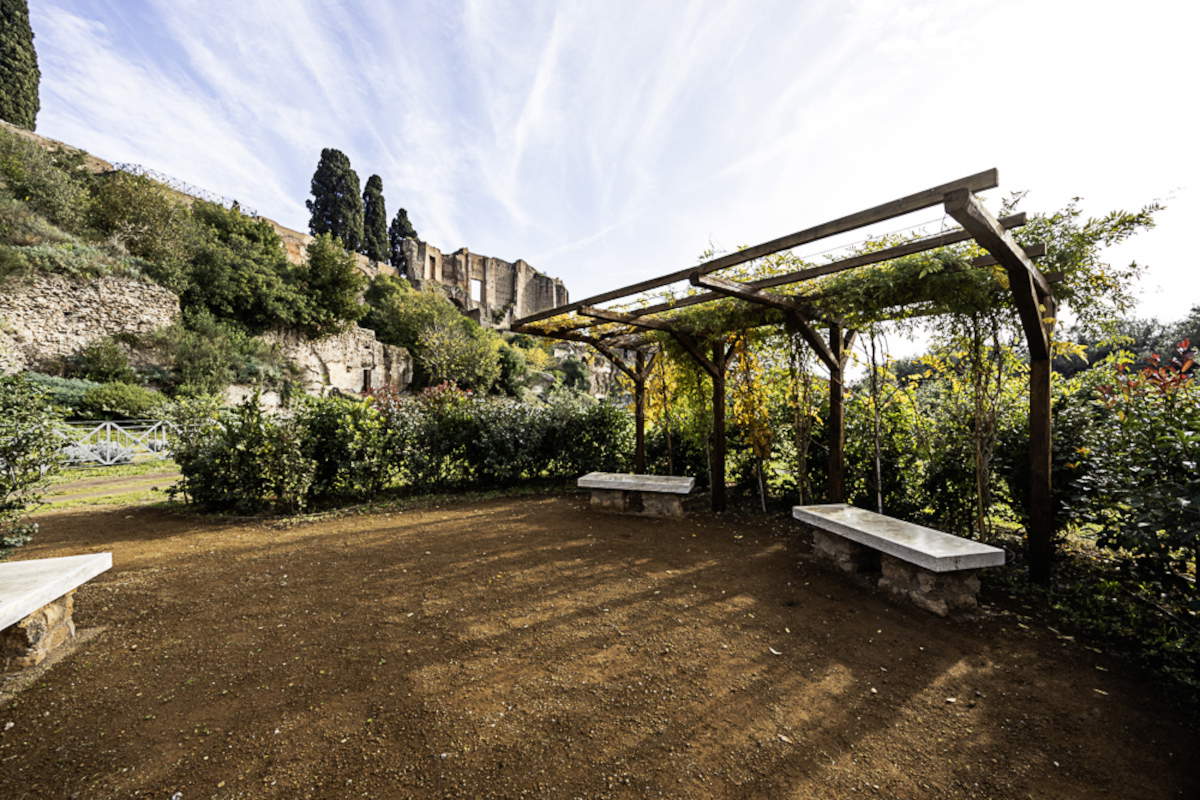The Colosseum Archaeological Park has inaugurated a green oasis along the southern slopes of the Palatine, thanks to the technical sponsorship of GEDI Publishing Group. TheAurum coronarium oasis was created as a contribution to resilience to the climate crisis that is gripping the planet. Plants were chosen, many present in the area since antiquity, which possess strong abilities to absorb atmospheric particulate matter and eliminate gaseous pollutants, dangerous to the environment and human health, and which also contribute to the protection of archaeological surfaces subject to degradation due to the deposition of pollutants on artifacts, with often irreversible damage.
The homage of theaurum coronarium has its roots in the Hellenistic tradition dating back to the time of Alexander the Great’s conquests, and in the Roman era it was exclusively due to those for whom triumph had been decreed. In particular, the choice of the name aurum coronarium was inspired by a fresco found inside the church of Santa Maria Antiqua, the place of worship that was established within the rooms that constituted the atrium or the headquarters of the guardhouse that guarded access to the residence of the Byzantine governor of Rome.
The “Oasi Aurum coronarium” project follows up on the first two “anti-smog barriers” that landscape architect Gabriella Strano (PArCo) installed in 2020 in a section of the southern route on the slopes of the Palatine, close to the outer Via dei Cerchi, after a study of suitable Mediterranean vegetation to mitigate the anthropogenic effects on the environment in the urban setting.
The oasis is intended to be a place of rest and relief, where it is possible to sit and admire the surrounding archaeological environment. The benches, made of tufa and travertine, typical materials of the Palatine geology, have been specially arranged to offer different experiences: in the shade of a large pergola or in the sun, based on a ventilation study that identified the ideal spot to open a window in the green barrier to allow the summer influx of the Roman Ponentine from the west. Explanatory panels, placed at a height suitable for all needs and ages, allow people to recognize the shrub species and their ability to absorb harmful airborne elements.
The leaves of the plant barriers-the same species have now also been planted in the Aurum coronarium Oasis-were sampled and analyzed in 2022 and 2023, to demonstrate and evaluate their ability to accumulate pollutant PM and provide preventive conservation services for the Palatine archaeological area. The study, carried out in scientific collaboration with the National Institute of Geophysics and Volcanology, the University of Siena, and the Accademia Nazionale dei Lincei, also used the exposure of lichen transplants to delineate, using magnetic and chemical biomonitoring techniques, the amount and type of vehicular-derived metallic PM spread on the southern slopes of the Palatine.
In line with the Parco Green project, the opening of the new Oasis at the Colosseum Archaeological Park is intended to strengthen the commitment to environmental protection through green area enhancements aimed at promoting biodiversity protection and sustainability. The southern slopes trail along which the oasis is encountered will be open on Dec. 8 from 10:15 a.m. to 1:45 p.m.
"The Aurum coronarium initiative is part of the policy that the Park has been pursuing since its establishment, aimed at the daily care of the large green area, the preservation of the ecosystem and biodiversity as well as the reduction of pollution, communicating these values to its public," said Alfonsina Russo, director of the Colosseum Archaeological Park. “The name of the project draws inspiration from a fresco that stands out on the third layer, dating to about the middle of the sixth century AD, of the famous palimpsest wall, located inside Santa Mafia Antiqua, with a scene of offering of gold crowns to the Madonna, portrayed seated on a throne with child.”
“The project we supported with great interest underscores the Gedi Group’s focus on sustainability and environmental protection,” said Gedi News Network CEO Corrado Corradi. “Aware of its leading role in the Italian publishing context and beyond, GEDI has developed an articulated ESG policy that establishes concrete commitments on issues of environmental respect, social progress and inclusion.”


 |
| The Colosseum Archaeological Park has opened a green oasis along the southern slopes of the Palatine Hill |
Warning: the translation into English of the original Italian article was created using automatic tools. We undertake to review all articles, but we do not guarantee the total absence of inaccuracies in the translation due to the program. You can find the original by clicking on the ITA button. If you find any mistake,please contact us.